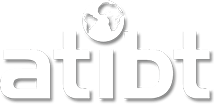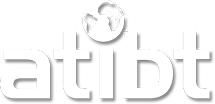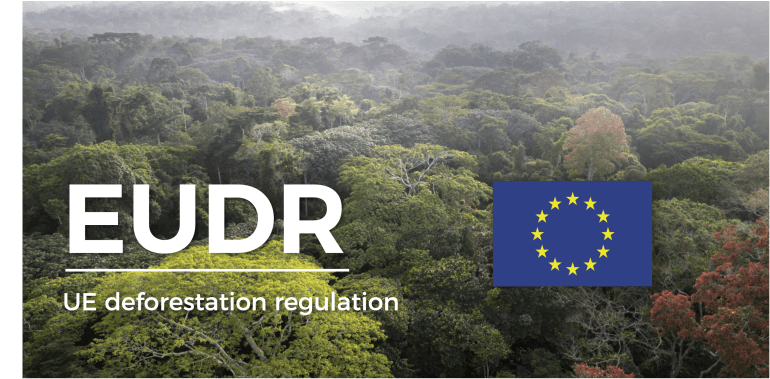

24.05.2025
Updated on the 27th of May 2025
The European Commission has published the first official countries benchmarking list according to their level of risk under the EUDR. The aim of this classification is to adapt due diligence obligations to the risks of deforestation.
But methodological limitations are already raising questions.

On 22 May 2025, the European Commission published the first official list classifying countries according to their level of risk under Regulation (EU) 2023/1115 against deforestation. This classification assesses the risk that a country or region represents for the production of raw materials potentially linked to deforestation and forest degradation.
This classification is an important step forward in the implementation of the EUDR, as it allows due diligence requirements to be adapted to the level of risk identified for each country. However, a limitation need to be taken into account: the methodology based mainly on bibliographic criteria relating to deforestation and forest degradation. The legality criterion, which is central to the EUDR, plays a secondary role, reduced to a supplementary analysis. Yet illegal logging accounts for 15-30% of the timber traded in the world, with an estimated value of between $51 and $152 billion a year. This methodological bias limits the real scope of the risk analysis proposed by the Commission.
Finally, an important clarification: even for countries classified as low risk, operators must assess the risks of bypassing or mixing with supplies from unknown or high-risk (standard or high) sources. In this respect, we always recommend prioritizing supplies that are certified as sustainably sourced or, failing that, audited by a third party, including for "low-risk" countries, in order to strengthen legal certainty and traceability.
What is the purpose of this benchmarking system?
First and foremost, the benchmarking system is intended to help the competent authorities of Member States define and plan their annual compliance checks, namely 1% for low-risk countries, 3% for standard-risk countries, and 9% for high-risk countries, as part of a risk-based approach.
The country benchmarking also allows due diligence obligations to be tailored for European upstream operators, non-SME downstream operators, and non-SME traders.
For countries classified as low risk :
Operators benefit from a streamlined procedure:
The objective is to focus verification efforts on the most sensitive areas, while reducing the administrative burden on supply chains deemed to contribute little to deforestation and forest degradation according to the Commission's assessment.
What can be done for standard risk countries?
Countries not classified are considered standard risk, and in this case, full due diligence applies:
In other words, these are countries where risks may exist, but where risk mitigation is possible.
What about countries classified as high risk?
Countries classified as high risk are considered non-compliant with the EUTR and their products connot be placed on the European market. These are not so much countries identified solely for their risk of deforestation as countries subject to European or international sactions, such as Belarus, the Russian Federation, North Korea and Myanmar. For these countries, no risk mitigation is possible : the import ban is absolute.
What methodology?
The ranking is primarily based on quantitative criteria derived from scientific data (FAO, FAOSTAT): deforestation rates, agricultural land expansion, and production trends. These elements form the core of the assessment.
For some countries, a second qualitative analysis may be added. This takes into account the exixtence of forest laws, data transparency, respect for indigenous peoples' rights, and any international sactions. Legality is therefore one of the aspects examined, but is not central to the system.
It should be noted that forest degradation is not taken into account at this stage due to a lack of sufficient FAO data. An update is planned after 2025.
Countries classified as low risk (selected by continent) :
According to the list published by the European Commission:
Europe
Albania, Andorra, Armenia, Austria, Belgium, Bosnia-Herzegovina, Bulgaria, Croatia, Cyprus, Czech Republic, Denmark, Estonia, Finland, France, Georgia, Germany, Greece, Hungary, Iceland, Ireland, Italy, Latvia, Lithuania, Luxembourg, Malta, Moldova, Monaco, Montenegro, Netherlands, Norway, Poland, Portugal, Romania, San Marino, Serbia, Slovakia, Slovenia, Spain, Sweden, Switzerland, Turkey, Ukraine, United Kingdom.
America
Antigua and Barbuda, Bahamas, Barbados, Canada, Chile, Costa Rica, Cuba, Dominica, Dominican Republic, Grenada, Jamaica, Saint Kitts and Nevis, Saint Lucia, Saint Vincent and the Grenadines, Suriname, Trinidad and Tobago, United States, Uruguay.
Africa
Algeria, Burundi, Cape Verde, Central African Republic, Comoros, Republic of Congo, Egypt, Eswatini, Gabon, Ghana, Kenya, Libya, Lesotho, Madagascar, Mali, Mauritius, Rwanda, Sao Tome and Principe, Seychelles, South Africa, South Sudan, Togo, Tunisia.
Asia
Afghanistan, Bahrain, Bangladesh, Bhutan, Brunei, China, India, Iran, Iraq, Israel, Japan, Jordan, Kazakhstan, Kyrgyzstan, Kuwait, Laos, Lebanon, Maldives, Mongolia, Nepal, Oman, Palestine, Philippines, Qatar, Saudi Arabia, Singapore, South Korea, Sri Lanka, Syria, Tajikistan, Thailand, Timor-Leste, Turkmenistan, United Arab Emirates, Uzbekistan, Vietnam, Yemen.
Oceania
Australia, Fiji, Kiribati, Marshall Islands, Federated States of Micronesia, Nauru, New Zealand, Palau, Papua New Guinea, Samoa, Solomon Islands, Tonga, Tuvalu, Vanuatu.
Countries classified as high risk
Wood products from these countries are banned from being imported into the EU, This ban is based not only on the EUDR but also on a specific European sanctions regime.
What about other countries?
All countries not listed retain the default status of 'standard risk', implying full due diligence. This classification is evolving, based on a structured dialogue with the Commission.
We can find in this category Brazil, Cameroon, DRC, Côte d’Ivoire.
.
And what about certification?
We believe that sustainable management certification remains the best tool for analyzing and reducing the risk of deforestation, forest degradation, and illegality in standard risk countries.
For certain countries classified as low risk, we strongly recommend prioritizing sustainably certified supplies, or failing that, supplies audited by a third party, in order to strengthen legal compliance and traceability.
Certification:
Certification is therefore an essential means of ensuring security, even in cases where the regulations provide for lighter obligations.